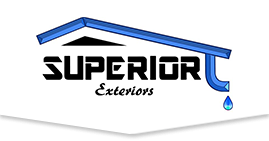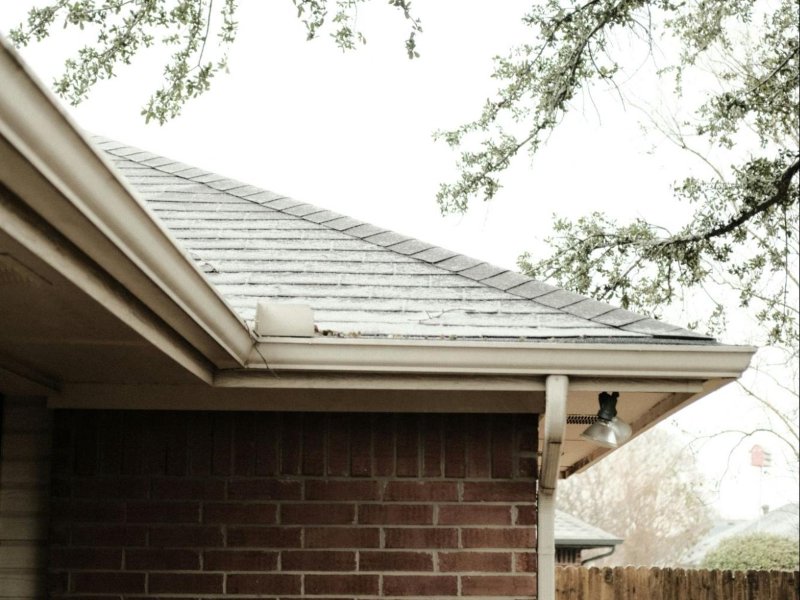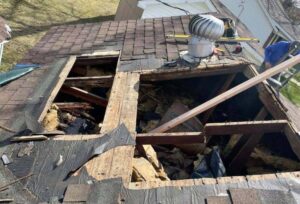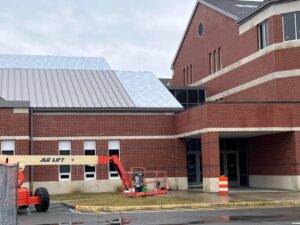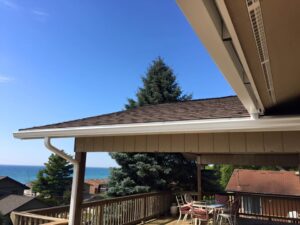Your roof is one of the most important components of your home, protecting you and your belongings from the elements. However, over time, even the best roofs experience wear and tear. Identifying potential problems early can save you from costly repairs or even the need for a complete roof replacement. Knowing the warning signs that indicate you need roof repairs is crucial in maintaining the integrity of your home.
In this guide, our friends at Roofing by Curry will help us explore the common signs on how your roof may need repairs and how you can identify these issues before they escalate.
Missing or Damaged Shingles
Shingles are your roof’s first line of defense against weather conditions such as rain, snow, and wind. When shingles are missing, cracked, or damaged, it leaves your roof vulnerable to water penetration and other forms of damage.
How to Spot It:
- From the ground: You can often see missing shingles from the ground by noticing uneven spots or gaps in your roofline.
- In your yard: If you find pieces of shingles in your yard or around your home’s perimeter after a storm, it’s a sign that your roof has sustained damage.
- On the roof: If you feel comfortable climbing up to inspect your roof, look for shingles that are curling, cracked, or buckling.
If you notice any of these signs, it’s important to have a professional roofer assess the damage. Missing shingles can expose the underlying materials, leading to leaks and potential structural damage.
Water Stains on Ceilings or Walls
Water stains inside your home are a telltale sign of a roof leak. These stains typically appear as discolored patches on your ceiling or walls, and they often grow over time if left untreated. Roof leaks can lead to mold growth, rotting wood, and structural issues, so it’s important to address them as soon as they’re detected.
How to Spot It:
- Ceiling stains: Look for yellow, brown, or dark spots on your ceiling, especially after heavy rain or snow.
- Wall stains: Water stains may also appear on your walls, particularly around windows or doors where leaks might be following the path of least resistance.
Water stains indicate that moisture has penetrated your roof’s protective layers, and this could be the result of damaged shingles, flashing, or even clogged gutters. The sooner you address these stains, the better you can prevent serious water damage to your home.
Granules in the Gutters
Asphalt shingles are coated with protective granules that help shield your roof from the sun’s UV rays and other environmental factors. Over time, these granules can wear off, particularly after severe weather or simply due to age. When large amounts of granules accumulate in your gutters or at the base of your downspouts, it’s a sign that your shingles are deteriorating.
How to Spot It:
- Inspect your gutters: During routine gutter cleaning, check for an excess of granules, which appear as small, gravel-like particles.
- Look at your downspouts: If you notice a significant amount of granules near the base of your downspouts after rain, it’s time to have your roof inspected.
Granule loss weakens the shingles’ ability to protect your roof, leaving it more susceptible to damage from the elements. If you’re seeing more granules than usual, your roof may be nearing the end of its lifespan or may need specific repairs.
Sagging Roof Deck
A sagging roof deck is one of the more serious warning signs that you need roof repairs. It often indicates structural damage, which could be the result of prolonged water exposure, rotting wood, or excessive weight from heavy snow and ice. If left unaddressed, a sagging roof can lead to costly repairs or even a full roof collapse.
How to Spot It:
- From outside: Stand back from your home and look at the roofline. It should be straight and even. If you notice any dips, sags, or areas that appear to be bowing, your roof may be in trouble.
- From inside the attic: Check for sagging or bowing beams, damp wood, or mold, which could indicate moisture is weakening the roof’s structure.
If you notice any sagging, it’s important to contact a roofing professional immediately. This type of issue requires prompt attention to prevent further damage and ensure your home’s safety.
Damaged Flashing
Flashing is the metal material installed around chimneys, skylights, vents, and other roof penetrations. Its purpose is to direct water away from these vulnerable areas and prevent leaks. When flashing becomes cracked, rusted, or detached, water can seep into your home, leading to significant damage.
How to Spot It:
- Around roof penetrations: Inspect areas around chimneys, skylights, and vents for any visible damage to the flashing, such as rust, cracks, or separation from the roof.
- In the attic: Water stains, damp insulation, or mold in the attic can also indicate that flashing is failing to protect your roof properly.
Damaged flashing is relatively easy to repair, but if it’s not addressed, it can result in costly leaks and water damage. Make sure to have a professional roofer repair or replace flashing as soon as you notice an issue.
Increased Energy Bills
A sudden increase in your energy bills could indicate that your roof is no longer providing proper insulation. Gaps, cracks, and leaks in your roof can allow heat to escape during the winter and cold air to enter during the summer, forcing your HVAC system to work harder to maintain a comfortable temperature inside your home.
How to Spot It:
- Unusual energy bills: Compare your current energy bills to those from previous months or years. If there’s a noticeable spike in energy usage, it could be due to poor insulation in your roof.
- Drafts in the attic: During colder months, check for drafts or cold spots in your attic, which could indicate air leaks caused by roof damage.
Increased energy bills are not only frustrating but can also indicate larger roof issues. Addressing insulation problems early can prevent more extensive repairs down the line.
Moss, Mold, or Algae Growth
While some homeowners enjoy the look of moss on their roof for its rustic charm, it’s a sign that your roof is holding excess moisture. Moss, mold, and algae growth can cause significant damage to your roof by trapping moisture against the shingles, which can lead to rot and degradation.
How to Spot It:
- On the roof: Look for green patches of moss or dark streaks caused by algae. These are more common in areas that don’t get much sunlight or on roofs that have poor drainage.
- Around gutters and downspouts: Moss and algae growth can also indicate poor drainage or clogged gutters, which can contribute to water buildup and roof damage.
If you spot moss or algae growth, it’s important to remove it promptly and address the underlying moisture problem to prevent further damage.
Age of the Roof
Even if you don’t see obvious signs of damage, the age of your roof can be a key indicator of whether it’s time for repairs or a replacement. Most roofs are designed to last between 20 and 30 years, depending on the materials used and the climate in your area.
How to Spot It:
- Know your roof’s age: If your roof is nearing or has surpassed its expected lifespan, it’s time to have it inspected for potential issues, even if you haven’t noticed any obvious signs of damage.
Conclusion
Identifying the signs of roof damage early can help you avoid costly repairs and extend the life of your roof. Whether you notice missing shingles, water stains, granules in your gutters, or moss growth, addressing these issues promptly can prevent more extensive damage to your home’s structure.
Regular roof inspections, both from the ground and in your attic, are crucial for catching problems early. If you’re unsure about the condition of your roof, it’s always a good idea to have a professional roofing contractor perform an inspection. By staying vigilant and addressing minor issues before they escalate, you can protect your home and save money in the long run.
